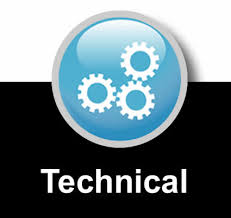What is an expression of wish (EOW)?
It’s a request to the trustees or scheme administrator of your pension scheme, setting out who you’d like to receive any death benefits payable on your death. It’s not binding on the trustee or scheme administrator, but they will take your wishes into consideration and are likely to follow them in the majority of cases where there are no potential conflicts with the needs of any other obvious beneficiaries.
You don’t have to provide an expression of your wishes, but as well as giving the trustees a signpost it can be very helpful for income and inheritance tax planning.
Who should I nominate in my EOW?
Clearly, this will be different for everyone and will depend on a number of factors, not least who is dependent on you and who you wish to benefit from your pension.
It is natural for most people to want to nominate their spouse or civil partner to receive any benefits after their own death, however this is not always the best option from a tax planning perspective. Assets from your estate which are passed to your spouse or civil partner are automatically exempt from inheritance tax (IHT), however if they are passed to your children or grandchildren they will be taxable. In contrast pension benefits paid on death are considered to be outside of your estate and can normally be passed to any nominated beneficiary free of IHT. You may therefore want to consider including your children or other family members in the EoW rather than leaving them other assets within your estate.
Death Benefits and income tax planning
Care should be taken to nominate as many people as you might potentially want to benefit from your pension.
Under pension freedoms, pension death benefits can be paid in the form of a lump sum or remain invested as a pension and taken as income, however legislation restricts the income option to legal spouses/civil partners and those who are included in the EoW. One company use the expression ‘in the room’ in terms of ensuring that everyone you want to benefit is included. Anyone who is in the room may choose to take their benefits as an income, those who are not must take a lump sum.
Where pension death benefits can be passed on as a pension (income) rather than a lump sum this can create additional tax planning opportunities. This is particularly important if you are over 75 years of age at date of death as pension benefits paid out to beneficiaries will be taxed at their marginal rate of income tax.
Example 1: if a pension fund was £100,000 and left to a child who is not named on an EOW, only a lump sum payment option is available. If the child was earning £10,000 below the higher rate tax band, the additional £100,000 would take their income into the higher rate tax bracket and result in them losing their personal allowance. An increased tax charge of approximately £47,000 could be payable. If they had been named on the EOW they would have been able to manage the income in accordance with their income requirements and tax position to generate a more financially beneficial outcome via beneficiary drawdown.
Pension death benefits payable where the pension holder is less than 75 years of age are payable to beneficiaries tax-free.
Example 2: a client is married and has two children who in turn have 5 young children. The client wants to ensure their spouse is protected but also recognises they may not need all of the pension death benefits to maintain their standard of living. Furthermore, their two children have good jobs and are higher rate taxpayers so may not be the most beneficial recipients of the pension benefits. The client EOW was set up with the following nominations:
- Spouse 91%
- Children 2% each, total 4%
- Grandchildren 1% each, total 5%
The percentages are largely irrelevant, as they can be altered with the agreement of the beneficiaries, but they do allow the spouse, children and grandchildren to all be included ‘in the room’. If the spouse needed all the pension benefits the pension trustees could find 100% in their favour. However, if the spouse had no need of the pension death benefits they could pass the pension to their children/grandchildren as either a lump sum or a pension income.
When should I update my EOW?
You should review your EOW annually with your retirement analyst and particular consideration should be given to your EOW if your circumstances change. It is not uncommon for EoW forms to be left unchanged for years and to contain references to individuals who no longer exist, or to omit family members who have been born in recent years.
Headlines in 2018 drew attention to a startling statistic that 750,000 people coming up to retirement are at risk of their pension being passed on to an ex-partner when they die because they have not updated their EOW.

